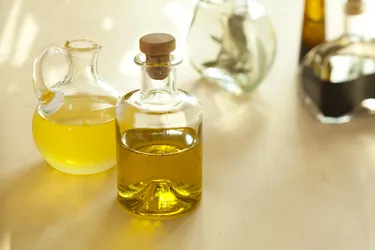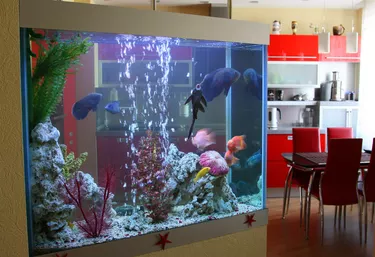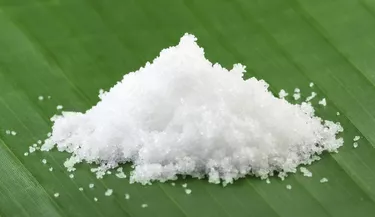
The short answer is, "Yes, vinegar can be used in a fish aquarium." To clean with vinegar or to use vinegar as an additive for adjusting pH, the aquarist is advised to learn how vinegar affects the water chemistry. Let's look at the amounts and dilution that are safe for the aquarium residents.
Types of Vinegar
Video of the Day

Distilled white vinegar is best for use with fish aquariums. Wine vinegar and apple cider vinegar can contain other organic materials that could be harmful to aquarium fish.
Video of the Day
Cleaning Aquariums with Vinegar

Vinegar can clean mineral deposits off aquarium hoods and aquarium glass above the water. Create a solution of vinegar and water in a ratio of 1 cup vinegar to 1 gallon water. Rather than spraying a vinegar solution directly on the deposits to be cleaned, pour the diluted vinegar first on a rag or scrubbie and apply to the area to be cleaned with gentle pressure. The small amount of vinegar that might dribble into the aquarium water should be neutralized by the buffers (carbonates) in the water and will not harm the fish.
Lowering pH with Vinegar

Commercially distilled white vinegar, often 5 percent acetic acid, has a pH of 2.4 and can be used to lower the pH in salt water aquariums. When acetic acid combines with oxygen in the water, it converts to carbon dioxide, water and bicarbonate. The increase in carbon dioxide reduces the pH of the aquarium water. Experts at Reefkeeping Online Magazine recommend no more than 1mL of vinegar per gallon of water added to the sump or an area of high water-flow and few creatures, to allow proper dilution. This amount should lower the tank pH by about 0.3 points.
Considerations

Too much carbon dioxide in the water, along with the reduction in the amount of oxygen, can be damaging to fish. If using vinegar to reduce system pH, measure alkalinity and pH before and several hours after adding any vinegar. Begin this process with small amounts and allow plenty of time for the system to equalize before attempting to add more.
Benefits

Vinegar has long been held in esteem as a "green" cleaning product. It is generally non-toxic and rinses clean without residue. In a fish aquarium, you want to use only clean-rinsing methods to clean your tank such as salt for scrubbing or vinegar for mineral deposit removal.